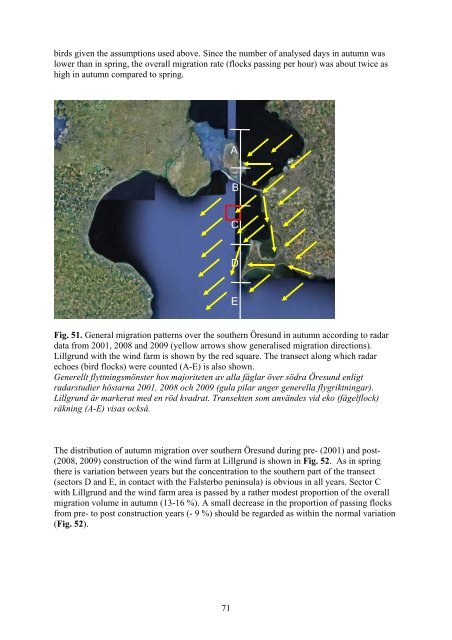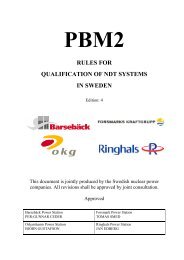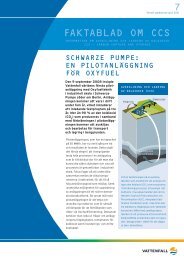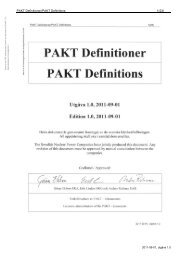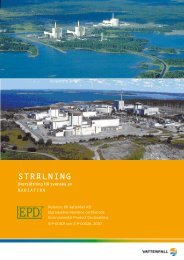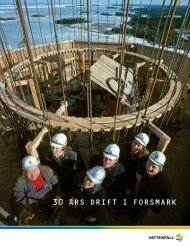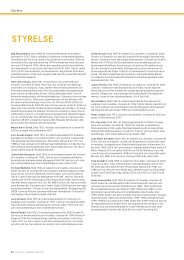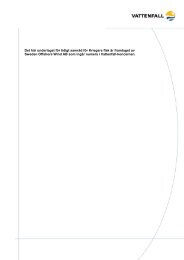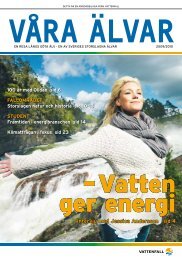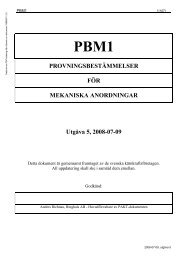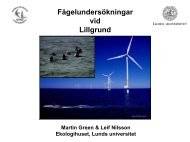Birds in southern Öresund in relation to the wind farm at ... - Vattenfall
Birds in southern Öresund in relation to the wind farm at ... - Vattenfall
Birds in southern Öresund in relation to the wind farm at ... - Vattenfall
Create successful ePaper yourself
Turn your PDF publications into a flip-book with our unique Google optimized e-Paper software.
irds given <strong>the</strong> assumptions used above. S<strong>in</strong>ce <strong>the</strong> number of analysed days <strong>in</strong> autumn was<br />
lower than <strong>in</strong> spr<strong>in</strong>g, <strong>the</strong> overall migr<strong>at</strong>ion r<strong>at</strong>e (flocks pass<strong>in</strong>g per hour) was about twice as<br />
high <strong>in</strong> autumn compared <strong>to</strong> spr<strong>in</strong>g.<br />
Fig. 51. General migr<strong>at</strong>ion p<strong>at</strong>terns over <strong>the</strong> <strong>sou<strong>the</strong>rn</strong> <strong>Öresund</strong> <strong>in</strong> autumn accord<strong>in</strong>g <strong>to</strong> radar<br />
d<strong>at</strong>a from 2001, 2008 and 2009 (yellow arrows show generalised migr<strong>at</strong>ion directions).<br />
Lillgrund with <strong>the</strong> w<strong>in</strong>d <strong>farm</strong> is shown by <strong>the</strong> red square. The transect along which radar<br />
echoes (bird flocks) were counted (A-E) is also shown.<br />
Generellt flyttn<strong>in</strong>gsmönster hos majoriteten av alla fåglar över södra <strong>Öresund</strong> enligt<br />
radarstudier höstarna 2001, 2008 och 2009 (gula pilar anger generella flygriktn<strong>in</strong>gar).<br />
Lillgrund är marker<strong>at</strong> med en röd kvadr<strong>at</strong>. Transekten som användes vid eko (fågelflock)<br />
räkn<strong>in</strong>g (A-E) visas också.<br />
The distribution of autumn migr<strong>at</strong>ion over <strong>sou<strong>the</strong>rn</strong> <strong>Öresund</strong> dur<strong>in</strong>g pre- (2001) and post-<br />
(2008, 2009) construction of <strong>the</strong> w<strong>in</strong>d <strong>farm</strong> <strong>at</strong> Lillgrund is shown <strong>in</strong> Fig. 52. As <strong>in</strong> spr<strong>in</strong>g<br />
<strong>the</strong>re is vari<strong>at</strong>ion between years but <strong>the</strong> concentr<strong>at</strong>ion <strong>to</strong> <strong>the</strong> <strong>sou<strong>the</strong>rn</strong> part of <strong>the</strong> transect<br />
(sec<strong>to</strong>rs D and E, <strong>in</strong> contact with <strong>the</strong> Falsterbo pen<strong>in</strong>sula) is obvious <strong>in</strong> all years. Sec<strong>to</strong>r C<br />
with Lillgrund and <strong>the</strong> w<strong>in</strong>d <strong>farm</strong> area is passed by a ra<strong>the</strong>r modest proportion of <strong>the</strong> overall<br />
migr<strong>at</strong>ion volume <strong>in</strong> autumn (13-16 %). A small decrease <strong>in</strong> <strong>the</strong> proportion of pass<strong>in</strong>g flocks<br />
from pre- <strong>to</strong> post construction years (- 9 %) should be regarded as with<strong>in</strong> <strong>the</strong> normal vari<strong>at</strong>ion<br />
(Fig. 52).<br />
71<br />
A<br />
B<br />
C<br />
D<br />
E


